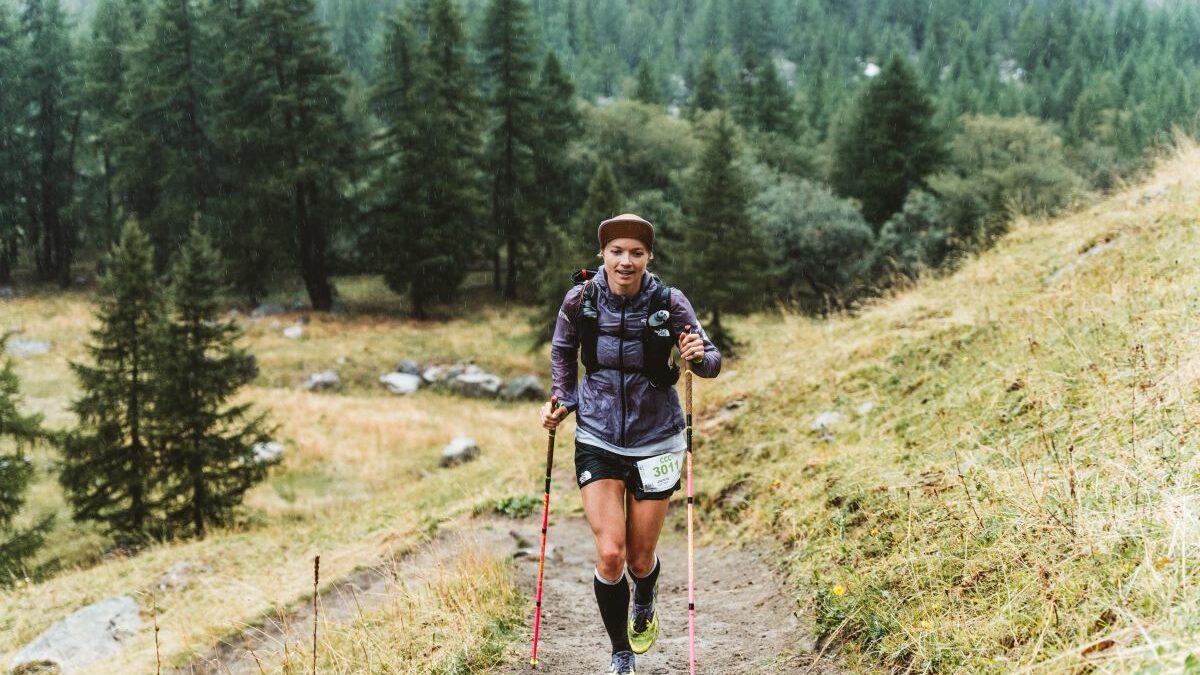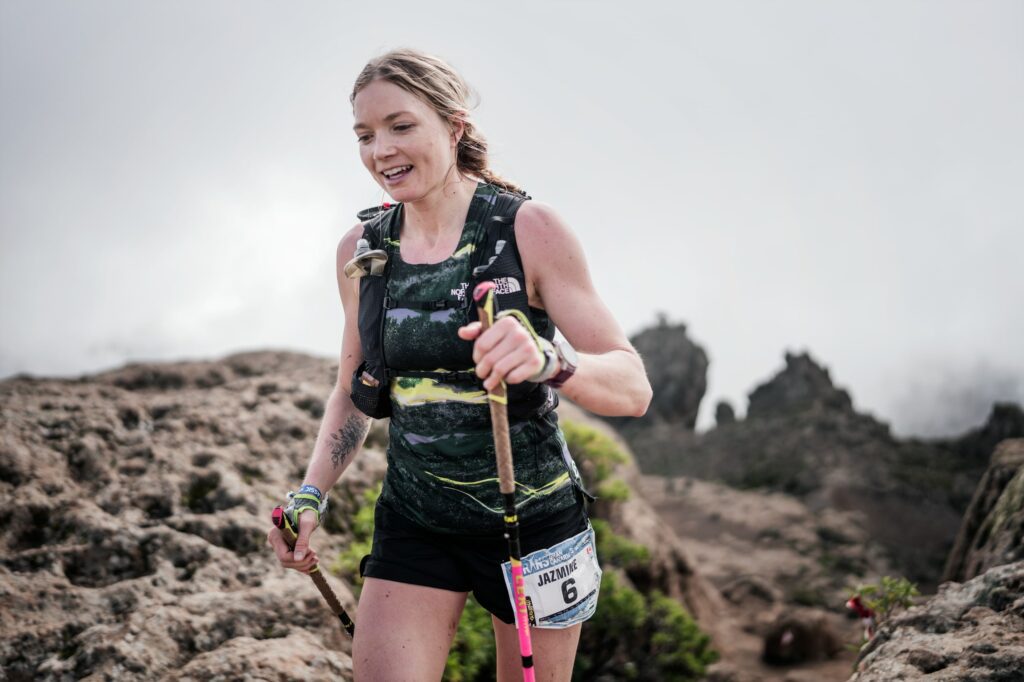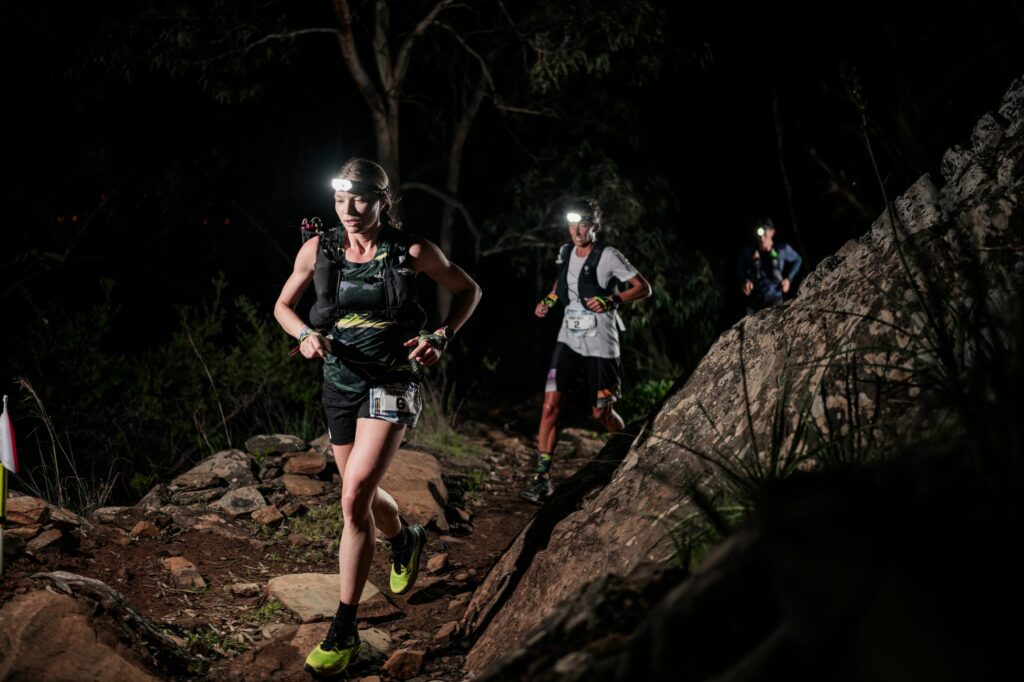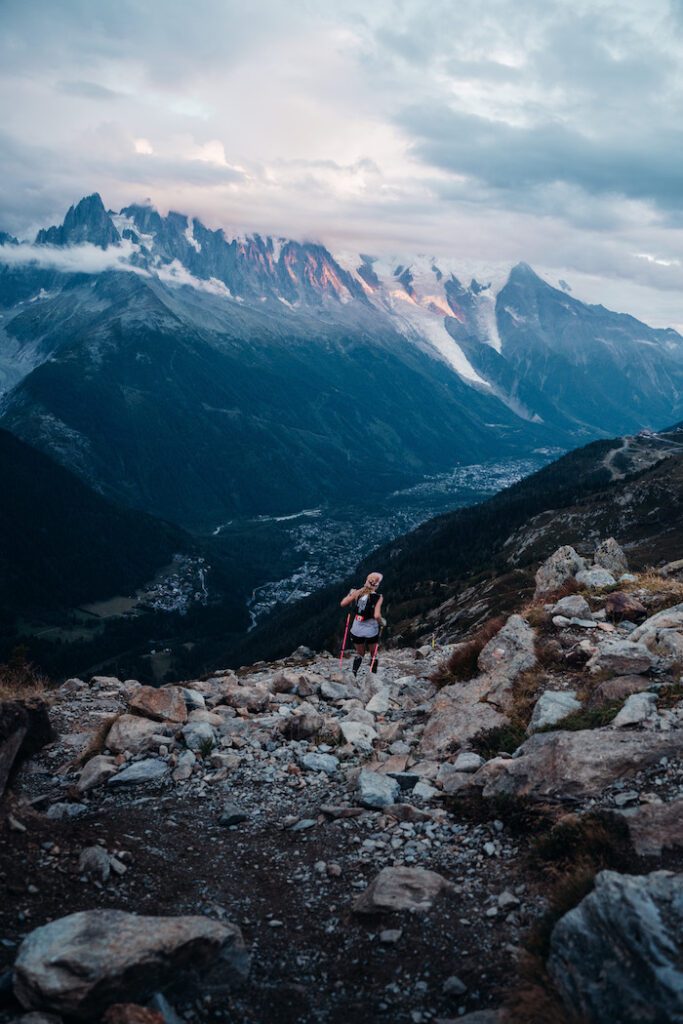5 tips from top Canadian ultrarunner Jazmine Lowther
Learn from Lowther's experience and become a healthier, more well-rounded athlete
 Photo by:
Mathis Dumas
Photo by:
Mathis Dumas
Canadian ultrarunning star Jazmine Lowther has worked through some epic highs and challenging lows since she turned pro in 2022. Lowther took the top spot at the 2022 Canyons Endurance Runs by UTMB, followed by a fourth-place finish in the 2022 CCC race at Ultra-Trail du Mont Blanc (UTMB). While she managed to speed to second at Transgrancanaria 128K in Spain in 2023, she has also struggled with injuries and biomechanics issues. Lowther recently shared five things she wishes she had embraced when she first dove into ultrarunning; newbies and seasoned athletes alike can learn from her wisdom and suggestions.

Befriend your heart rate
Lowther says she mostly runs by RPE (rate of perceived exertion), but adopting an approach that leans more toward heart-rate-based training has allowed her to “understand my own physiology much deeper, recover properly, and respect pacing.”
Becoming familiar with your heart rate zones can be a valuable skill, and paying attention to your performance metrics, such as pace and endurance, in relation to your zones will help you become a more responsive, tuned-in, healthy athlete. You’ll also be better able to notice if your body needs more rest and recovery time.

Start a training log
While many runners count on apps like Strava to capture their running data, spending time logging more in-depth information about your training is worthwhile, as it provides unique insights over time. “Strava is great (it has most of my training),” says Lowther, “but it doesn’t include how I felt, what workouts I completed, what I ate before/after, caffeinated, fatigue, etc.”
Wear sunscreen
This one is as simple as it sounds. “Protect thy skin,” says Lowther. “Ultrarunning takes you out there for mega-long hours! Slather up!” While most of us know that prolonged sun exposure during outdoor running can increase the risk of skin damage, including sunburn, premature aging and an elevated risk of skin cancer, it can be easy to forget to reapply after hours on the trails. Wearing sunscreen helps to create a protective barrier, reducing the absorption of UV rays and minimizing the potential harm to the skin, and, as Lowther notes, is an essential precautionary measure (in all kinds of weather) for maintaining skin health.
View this post on Instagram
Find your baseline
Lowther suggests integrating benchmark training runs into your routine to establish an initial baseline. The process involves finishing a predetermined course or distance to use as a reference tool and provides a basis for assessing your performance and comparing it to others in terms of time, pace, or other relevant metrics. “I suppose I’ve done this in an unstructured way (Strava segments anyone?) but seriously, repeating workouts in the same location/distance is great for checking in on things,” she says.

Have patience in the process
Focus on consistency and long-term goals and gains. Consider each run and workout as an investment in your fitness and training bank, even if it didn’t go exactly as planned. “One day at a time, year over year,” says Lowther. “Consistency, is that you?”


